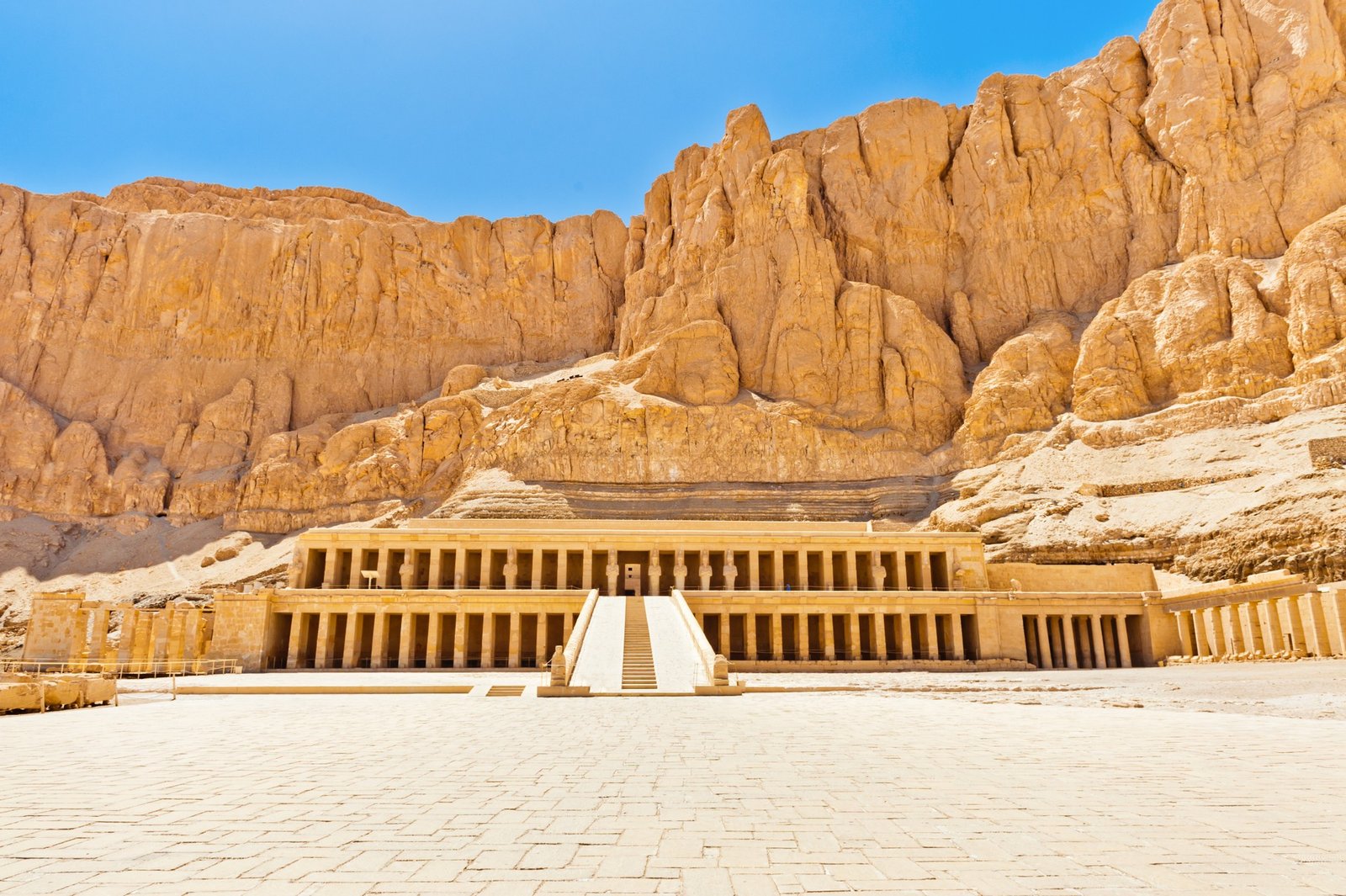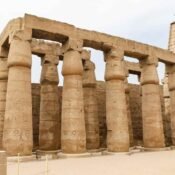
Hatshepsut Temple in Luxor
From a distance, Queen Hatshepsut’s temple in Luxor is unrivaled. It’s magnificent to see the unusual multi-tiered building clinging to the limestone cliffs on the river valley’s shoulder. Its layout is as distinctive as the Pharaoh who ordered its building.
Who is Hatshepsut the Great?
The only female pharaoh in Egyptian history was Hatshepsut. After the passing of her father Thutmose I and half-brother Thutmose II, she ascended to power in the New Kingdom.
The visual impact of the Temple of Hatshepsut is notable from a distance. It’s magnificent to see the unusual multi-tiered building clinging to the limestone cliffs on the river valley’s shoulder. Its layout is as distinctive as the Pharaoh who ordered its building.
The only female pharaoh in Egyptian history was Hatshepsut. After the passing of her father Thutmose I, her half-brother, and her husband Thutmose II, she ascended to power during the New Kingdom.
In her shrine, relief carvings honour her accomplishment. She made significant contributions to numerous temples, notably Karnak. When it was unearthed in the middle of the 19th century, the temple was in ruins and had been destroyed by Thutmose III. It was severely damaged after he assumed the throne, most likely as a result of Hatshepsut keeping him out of power.
Queen Hatshepsut temple as a monastery
The location was also used as a monastery in the first century AD, which possibly hastened its demise. Major restoration was the outcome.
Many of the reliefs have deteriorated, and the majority of the pillars are not genuine. As a result, the temple may disappoint if it’s close by, especially given how well-liked it is with tourists.
Recent Posts
Luxor day tour: Most Illuminated Temples
Discover Luxury Nile Cruises
Designing the Perfect Itinerary for Your Nile Cruise




